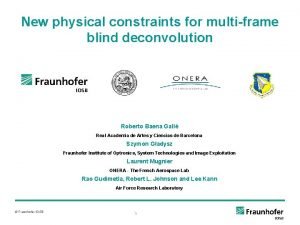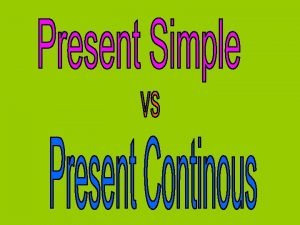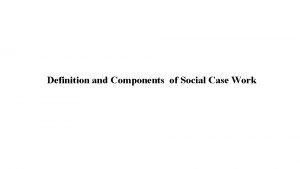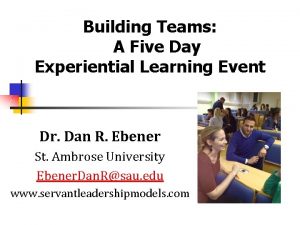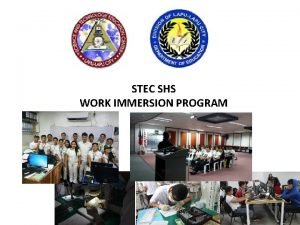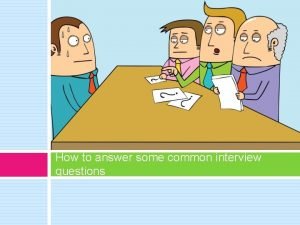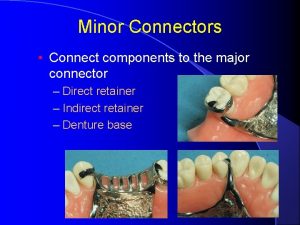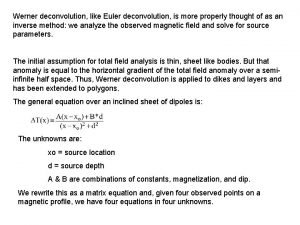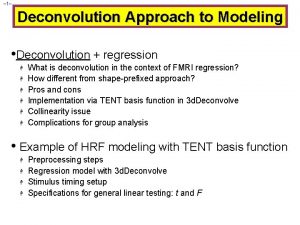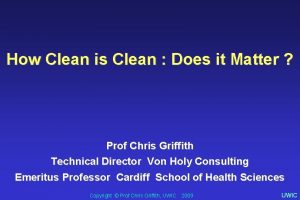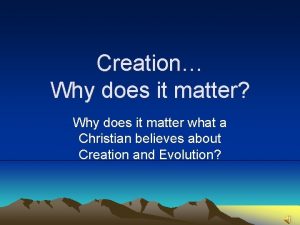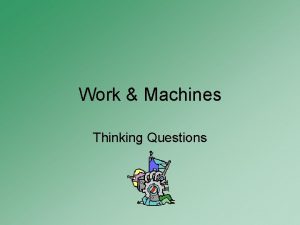Lecture 18 Deconvolution CLEAN Why does CLEAN work
























- Slides: 24

Lecture 18 • Deconvolution – CLEAN • Why does CLEAN work? • Parallel CLEAN – MEM NASSP Masters 5003 F - Computational Astronomy - 2009

‘Deconvolution’. • How can we go from – this – to this? • Deconvolution in the sky plane implies interpolation or reconstruction of missing values in the UV plane. • But we, the human observer, can look at the top image and just ‘know’ that it is 2 point sources on a blank field. NASSP Masters 5003 F - Computational Astronomy - 2009

The CLEAN algorithm. Högbom J A, Astron. Astrophys. Suppl. 15, 417 (1974) 1. Find the brightest pixel rb in the dirty image. 2. Measure its brightness D(rb). 3. Subtract λD(rb)B(r-rb) from the image, where λ is a number in the approximate range 0. 01 to 0. 2. 4. Repeat until satisfied. • The successive numbers λD(rb) are called clean components. Further refinements have been added by Clark and later by Cotton and Schwab, but the essential nature of the algorithm remains the same. Talk at Nagoya University IMS Oct 2009

CLEANing Dirty image Cleaned image Talk at Nagoya University IMS Oct 2009

CLEANing Dirty image Cleaned image Talk at Nagoya University IMS Oct 2009

CLEANing Dirty image Cleaned image Talk at Nagoya University IMS Oct 2009

CLEANing Dirty image Cleaned image Talk at Nagoya University IMS Oct 2009

Problems with CLEAN: 1. Mathematicians don’t like CLEAN. They say it ought not to work. There are lots of papers out there proving it doesn’t. • • But it does work, good enough for rough-and-ready astronomers, anyway. This is because the real sky obeys strong constraints: • • Nearly always there are just a few smallish bright patches on a blank background; Negative flux values don’t occur in the real sky. 2. CLEAN doesn’t work really well on extended sources – can get ‘clean stripes’ or ‘bowl’ artifacts. 3. It is difficult to know when to stop CLEANing. Too soon, and you are missing flux. Too late, and you are just cleaning the noise in your image. NASSP Masters 5003 F - Computational Astronomy - 2009

More problems with CLEAN: 4. Sources which vary in flux over the duration of the observation. – Solution: cut the observation into shorter chunks, clean separately, then recombine. • Clunky, loses sensitivity. – ‘Parallel’ cleaning works well though. 5. (Only relevant for wide-band case: ) different sources have different shapes of spectrum. – Parallel cleaning is also good for this – even when sources vary both in frequency and time! 6. Sources which aren’t located at the centre of a pixel. Fixes: – Re-centre on each source, then CLEAN them away. – You guessed it – parallel cleaning can also help. NASSP Masters 5003 F - Computational Astronomy - 2009

Wide-band issues: one can vastly increase the number of samples by extending the bandwidth. Simulated (e)MERLIN UV samples, δ=+35° Δf/f = 0. 0005 Δf/f = 0. 3 Talk at Nagoya University IMS Oct 2009

Description of the problem: an example. If both point sources have identical spectra, there is no problem. S f Talk at Nagoya University IMS Oct 2009

Description of the problem: an example. More realistic: different spectra: S f This will not clean away. Talk at Nagoya University IMS Oct 2009

Parallel CLEAN for wide-band observations. Conway J E, Cornwell T J & Wilkinson P N, MNRAS 246, 490 (1990) Decomposed the dirty image as a sum of convolutions. Sault R J & Wieringa M H, A&A Suppl. Ser. 108, 585 (1994) Described the parallel CLEAN algorithm. I 0 I 1 I 2 * * * = + B 0 + B 1 … B 2 Dirty image D Talk at Nagoya University IMS Oct 2009

The Sault-Wieringa algorithm: • The basic idea is to construct a number of dirty beams from components of a Taylor expansion of the spectrum. 0 th order S + Taylor expansion νref A source spectrum: ν νref 1 st order ν νref 2 nd order ν + etc… NASSP Masters 5003 F - Computational Astronomy - 2009

Taylor-term beams max = 1. 0 max = 0. 02 max = 0. 01 max = 0. 004 0 th order 1 st order 2 nd order 3 rd order NASSP Masters 5003 F - Computational Astronomy - 2009

A simulation to test this: 19 point sources from 0. 001 to 1 Jy Spectra: cubics, with eg random coefficients. ν (GHz) NASSP Masters 5003 F - Computational Astronomy - 2009

Alternate cleaning: (i) 1000 cycles of standard clean …not good. NASSP Masters 5003 F - Computational Astronomy - 2009

Alternate cleaning: (ii) each spectral channel cleaned, then co-added. …pretty good, but do we lose faint sources? NASSP Masters 5003 F - Computational Astronomy - 2009

S-W clean to various orders (All 1000 cycles with gain (λ) = 0. 1) 0 th order (equivalent to standard clean) NASSP Masters 5003 F - Computational Astronomy - 2009

S-W clean to various orders 1 st order NASSP Masters 5003 F - Computational Astronomy - 2009

S-W clean to various orders 2 nd order NASSP Masters 5003 F - Computational Astronomy - 2009

S-W clean to various orders 3 rd order Not much left but numerical noise. NASSP Masters 5003 F - Computational Astronomy - 2009

Time-varying sources: Source constant in time Source flux varying with time NASSP Masters 5003 F - Computational Astronomy - 2009

Time-varying sources: Stewart I M, Fenech D M & Muxlow T W B, in preparation. 5 sources, all ~1 Jy, varying in both flux and spectral index by ~x 10. Input to the simulation (average flux; convolved with restoring beam) Dirty image Högbom clean: 2000 cycles, λ=0. 1 Parallel clean: 2000 cycles, λ=0. 1, Nf=3, Nt=6 All brightness scales -0. 02 to +0. 02 Jy NASSP Masters 5003 F - Computational Astronomy - 2009
 Image deconvolution
Image deconvolution Roberto baena galle
Roberto baena galle Hey hey bye bye
Hey hey bye bye 01:640:244 lecture notes - lecture 15: plat, idah, farad
01:640:244 lecture notes - lecture 15: plat, idah, farad Clean up everybody let's clean up
Clean up everybody let's clean up Dont ask
Dont ask Does this table represent a function why or why not
Does this table represent a function why or why not What does a table represent
What does a table represent Clean and safe at work
Clean and safe at work The pure in heart bible verse
The pure in heart bible verse Resume format sample for work immersion
Resume format sample for work immersion Objectives about work immersion
Objectives about work immersion Hard work or smart work
Hard work or smart work Present simple de work
Present simple de work Social group model
Social group model 4 components of social case work
4 components of social case work Team vs group
Team vs group Work energy theorem
Work energy theorem Chapter 4 section 1 work and machines answer key
Chapter 4 section 1 work and machines answer key I work all night i work all day to pay the bills
I work all night i work all day to pay the bills Smart work vs hard work group discussion
Smart work vs hard work group discussion Work immersion coordinator
Work immersion coordinator Why do you want to work for us
Why do you want to work for us Which component of
Which component of Work in pairs.
Work in pairs.

